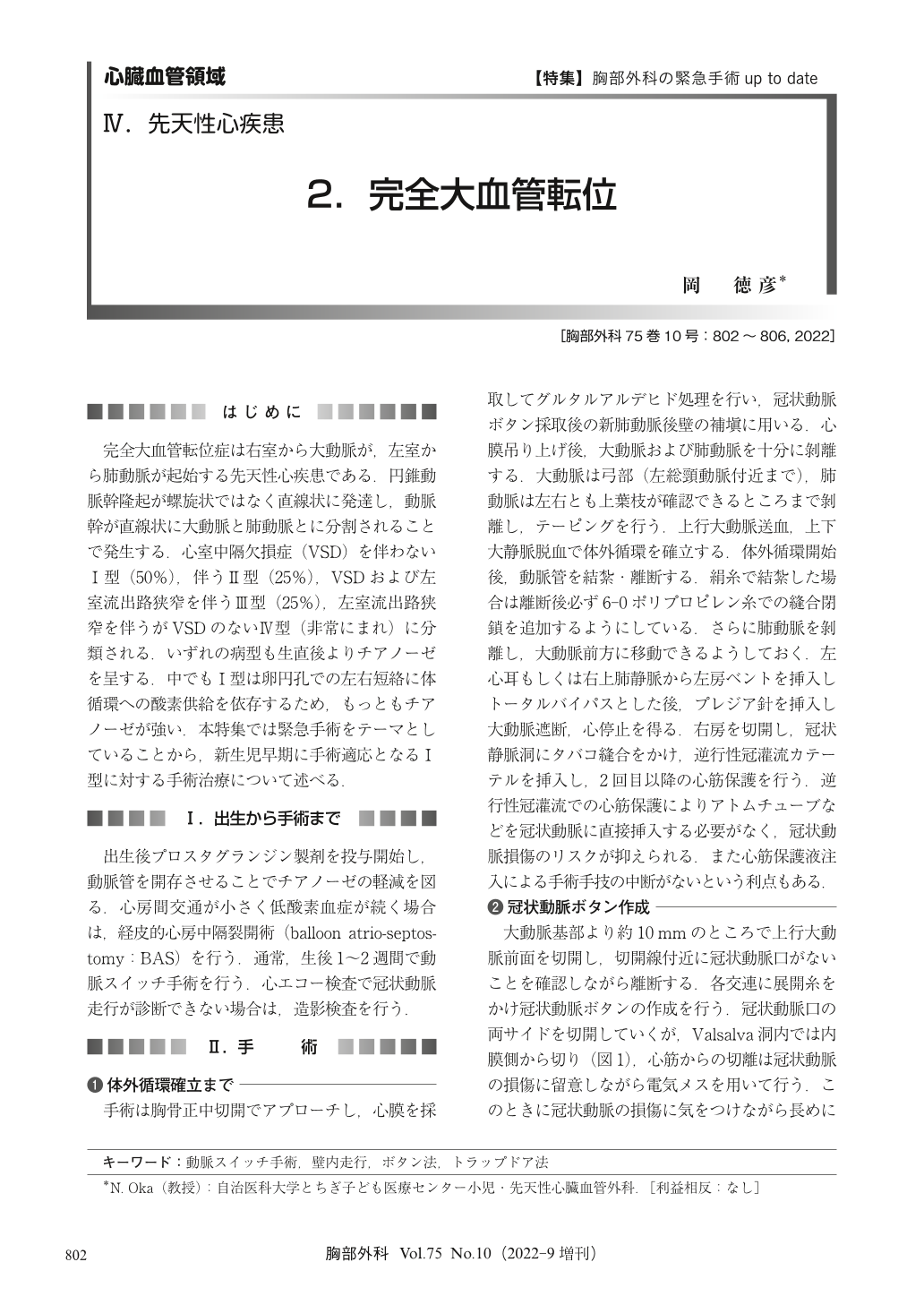Japanese
English
- 有料閲覧
- Abstract 文献概要
- 1ページ目 Look Inside
完全大血管転位症は右室から大動脈が,左室から肺動脈が起始する先天性心疾患である.円錐動脈幹隆起が螺旋状ではなく直線状に発達し,動脈幹が直線状に大動脈と肺動脈とに分割されることで発生する.心室中隔欠損症(VSD)を伴わないⅠ型(50%),伴うⅡ型(25%),VSDおよび左室流出路狭窄を伴うⅢ型(25%),左室流出路狭窄を伴うがVSDのないⅣ型(非常にまれ)に分類される.いずれの病型も生直後よりチアノーゼを呈する.中でもⅠ型は卵円孔での左右短絡に体循環への酸素供給を依存するため,もっともチアノーゼが強い.本特集では緊急手術をテーマとしていることから,新生児早期に手術適応となるⅠ型に対する手術治療について述べる.
Transposition of the great arteries (TGA) is a congenital heart disease in which the aorta originates from the right ventricle and the pulmonary artery from the left ventricle. In embryonic development, normally, the aorticopulmonary septum develops a spiral-like configuration resulting in the pulmonary trunk twisting around the ascending aorta. However, in TGA, there is lack of spiral rotation of the aorticopulmonary septum. TypeⅠ (50%) without ventricular septal defect (VSD), typeⅡ (25%) with VSD and left ventricular outflow tract stenosis (LVOTS), typeⅢ (25%) with VSD and LVOTS, and typeⅣ (very rare) with VSD but no LVOTS. All types present with cyanosis from the time of birth. Of these, typeⅠ is the most cyanotic, as systemic oxygen supply depends on the flow through the foramen ovale. Since the theme of this article is emergency surgery, we will discuss surgical treatment for typeⅠ, for which surgery is indicated in the early neonatal period.

© Nankodo Co., Ltd., 2022


